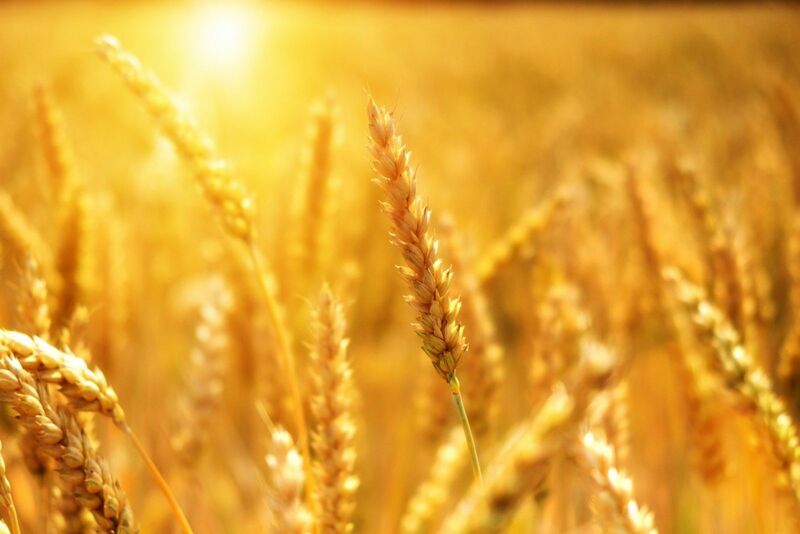
In an October 27 Barchart article, I suggested that CBOT wheat futures could be due for a rebound. The nearby contract was trading at the $5.75 per bushel level that day. I concluded the article by writing:
War in Ukraine, a tight wheat balance sheet, and the significant correction from the highs could mean CBOT wheat futures and the WEAT ETF are close to rock-bottom prices, and a correction could take prices significantly higher over the coming months. However, picking bottoms in any market is impossible, and wheat is no exception. Therefore, the optimal strategy could be small long risk positions, leaving plenty of room to add if the price declines. Wheat and the WEAT ETF offer compelling value in late October 2023. At below $6 per bushel, CBOT wheat is too cheap in the current environment.
On October 23, CBOT wheat for March 2024 delivery settled at $6.15 per bushel. The price was higher on December 8, 2023, at above the $6.35 level.
CBOT wheat futures are trending lower
Nearby CBOT wheat futures closed 2022 at $7.92 per bushel after reaching a record high of $14.2525 in March 2022.

As the monthly chart highlights, the soft red winter wheat futures on the CBOT have made lower highs and lower lows since March 2022. The bearish trend continued throughout the first eleven months of 2023. Meanwhile, the recent price action may indicate the trend is running out of bearish steam.

After reaching a $5.5625 low on November 27, the CBOT wheat futures turned higher, reaching $6.4950 on December 6. The 16.8% gain eclipsed the November 8 $6.22 high and the October 20 $6.31 per bushel high, the technical resistance levels.
The KCBT-CBOT spread has declined
In recent articles on the wheat futures market, I highlighted the price action in the KCBT versus CBOT wheat spread, explaining the KCBT premium tends to rise when U.S. consumers become concerned about higher prices and dwindling supplies.

The chart ({KEH24}-{ZWH24}) dating back to 1970 shows the decline in KCBT hard red winter wheat’s premium over CBOT soft red winter wheat from the record $1.96 per bushel May 2023 high to 34.75 cents on December 8, at near the long-term median level.
Consumers are not as concerned about price or supplies
Many U.S. bread manufacturers use the KCBT wheat futures to price and hedge their wheat requirements. Since Russia is the world’s leading wheat exporting country, and Ukraine is a top producer, the war in Europe’s breadbasket caused consumer panic, sending wheat prices to highs and the KCBT-CBOT spread to the highest level in history.
Meanwhile, nearby CBOT wheat prices, the global benchmark, declined from over $14 to under $6 per bushel, alleviating many price and supply concerns. The drop in the KCBT premium over CBOT futures indicates that consumer hedging has declined, and supplies remain adequate to meet the demand.
The spread declined to the median level over the past half-century, which stands at the 20 to 30 cents premium level for the KCBT over the CBOT wheat futures.
Three reasons wheat could have reached a bottom
The three factors that indicate that March CBOT wheat futures could have reached a significant bottom at $5.5625 are:
- The short-term bearish trend is bending as the price approaches the October 20 $6.31 high.
- The war in Ukraine continues in late 2023, threatening wheat production and the critical logistical region at the Black Sea ports.
- In early 2024, the wheat and other grain and agricultural futures markets will focus on the uncertainty of the 2024 crops. Prices tend to move higher before the beginning of the planting season in spring.
While the USDA’s November World Agricultural Supply and Demand Estimates Report said that U.S. and global wheat ending stocks rose, the uncertainty of the war in Ukraine will remain a clear and present danger for wheat supplies in 2024. The USDA will release its final December WASDE report later today, December 8, 2023, at noon EST.
Expect higher prices in spring
Seasonality is a critical factor for agricultural commodities. While there is plenty of wheat to meet the current global demand, worldwide demand yearly increases as the population grows. With over eight billion mouths to feed, the demand side of wheat’s fundamental equation increases, and supplies must keep pace to prevent deficits.
The futures markets will begin to reflect the uncertainty of the spring planting season over the coming weeks. The active month for CBOT and KCBT wheat futures is now March.
Wheat prices have dropped to a level where the risk-reward dynamics favor the upside. CBOT wheat futures closed 2022 at $7.92 per bushel, with the KCBT futures at $8.88 on December 29, 2022. KCBT futures are nearly $2.20 lower, with CBOT futures more than $1.50 below last year’s closing price, which could be inexpensive when the 2024 crop year begins in spring.
The Teucrium Wheat ETF product (WEAT) follows the price of a portfolio of three CBOT wheat futures contracts higher and lower.
On the date of publication, Andrew Hecht did not have (either directly or indirectly) positions in any of the securities mentioned in this article. All information and data in this article is solely for informational purposes. For more information please view the Barchart Disclosure Policy here.






